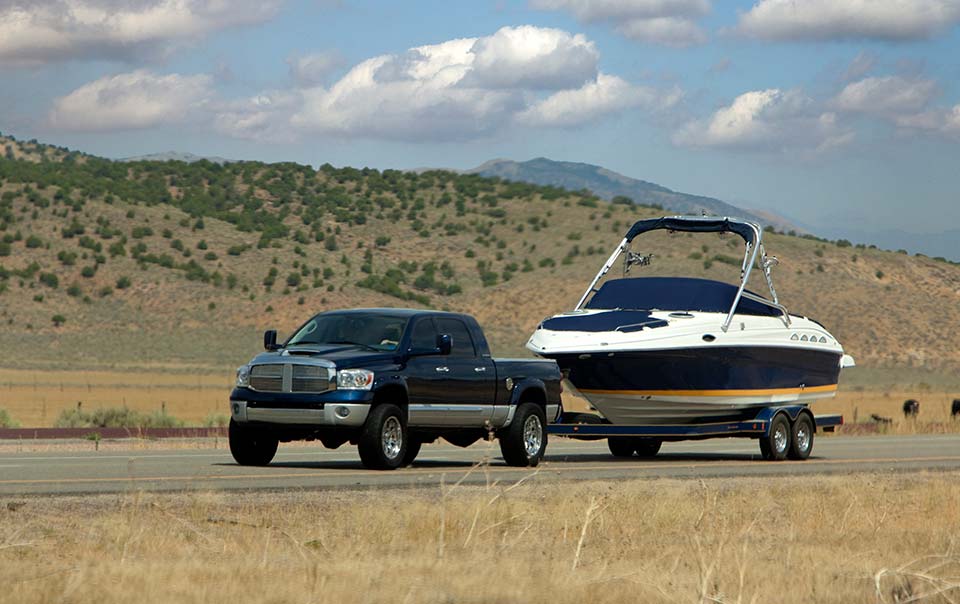If you love to boat, you probably own a boat and trailer. Nothing will ruin a fun weekend on the water like getting in a crash because your boat’s brake lights were faulty! That’s why you need to ensure that you are set up for success to tow your boat safely.
Remember the following safety guidelines the next time you tow your boat. That way, you’ll get there safely to enjoy the water!
Preparation for Safe Towing
The first thing is to ensure your vehicle can tow what’s behind you. A typical car might not be up to the job.. Also, check that you have the proper trailer, hitch, and safety chains for your trip.
Your boat trailer should have a metal plate that lists its capacity. Before you start, check to be sure your trailer can handle the boat, motor, and gear.
Take a close look at your trailer’s tongue weight on the trailer capacity plate. If the tongue weighs too much, it makes steering difficult, but a tongue that does not weigh enough will cause the boat to fishtail. Both are dangerous situations you want to avoid at all costs.
Make sure your trailer class matches the hitch you have:
- Trailer Class 1: Towing weight not to exceed 2,000 lbs
- Trailer Class 2: 2001 lbs. to 3500 lbs
- Trailer Class 3: 3501 lbs. to 5000 lbs
- Trailer Class 4: Over 5000 lbs., up to 12,000 lbs
Gross Axle Weight Rating, Also Known As GAWR
You can see if your vehicle can handle your boat and trailer by checking its Gross Axle Rate Rating. Also, check the GAWR.
Your vehicle has both ratings, which should be listed in your owner’s manual. When you buy your car, be sure you are getting the correct one to handle your boat and trailer.
It’s vital not to go over 80% of your vehicle’s recommended weight rating.
Final Tips To Tow Your Boat
- Be sure the boat is in the center of your trailer. Also check that fuel and gear are evenly distributed. Remember that an uneven load on the road can lead to accidents.
- Tie down every loose item in your watercraft. Assume that any object that is not tied down or secured will fall out.
- When attaching your trailer to your vehicle, crisscross your tow chains beneath the vehicle frame. Your chains must support your boat and trailer’s full weight. This is vital for towing safety if your hitch fails.
- Make sure your brake and direction lights work. That way, drivers behind you know what you’re doing when you stop or turn.
- Check the pressure of each tire and be sure all lugnuts are tight.
- Practice your turns. Also, back up with the boat trailer attached. Doing this takes practice.
- For extra safety, use more straps to tie the craft to your trailer frame.
Road Handling
Driving dynamics drastically change when you’re towing a heavy load. You must drive slowly and carefully, or disaster could strike.
The weight makes your vehicle less responsive to braking and turning, so cut your speed. Give yourself double the space behind cars that you usually do. You’ll have additional time to steer and brake.
Also, remember at turns that you have something behind you. So you’ll need to make turns much wider than usual, or you’ll run your trailer off the road.
If you follow these easy safety guidelines, you’ll always be ready to drive safely with your boat. Have fun on the water!

Leave a Reply